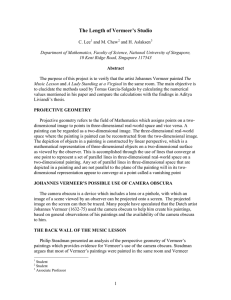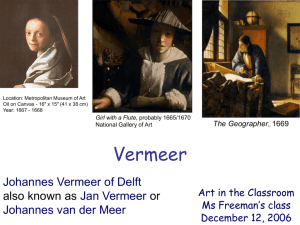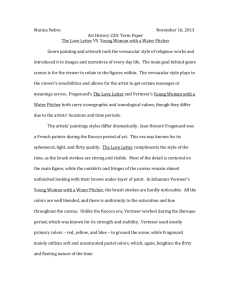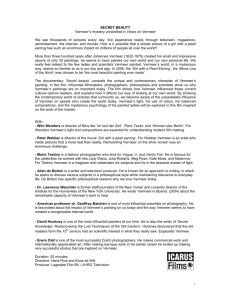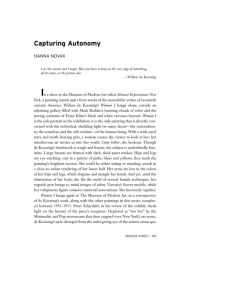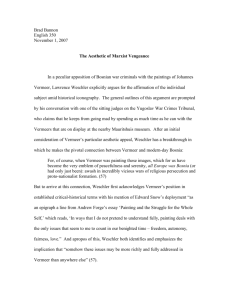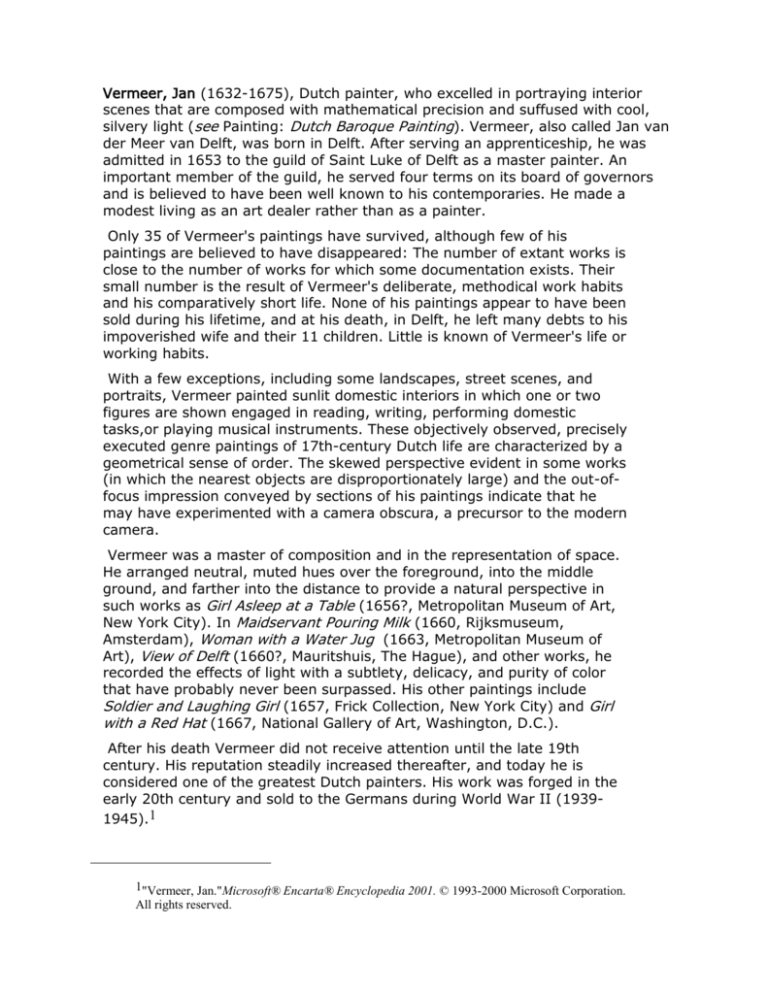
Vermeer, Jan (1632-1675), Dutch painter, who excelled in portraying interior
scenes that are composed with mathematical precision and suffused with cool,
silvery light (see Painting: Dutch Baroque Painting). Vermeer, also called Jan van
der Meer van Delft, was born in Delft. After serving an apprenticeship, he was
admitted in 1653 to the guild of Saint Luke of Delft as a master painter. An
important member of the guild, he served four terms on its board of governors
and is believed to have been well known to his contemporaries. He made a
modest living as an art dealer rather than as a painter.
Only 35 of Vermeer's paintings have survived, although few of his
paintings are believed to have disappeared: The number of extant works is
close to the number of works for which some documentation exists. Their
small number is the result of Vermeer's deliberate, methodical work habits
and his comparatively short life. None of his paintings appear to have been
sold during his lifetime, and at his death, in Delft, he left many debts to his
impoverished wife and their 11 children. Little is known of Vermeer's life or
working habits.
With a few exceptions, including some landscapes, street scenes, and
portraits, Vermeer painted sunlit domestic interiors in which one or two
figures are shown engaged in reading, writing, performing domestic
tasks,or playing musical instruments. These objectively observed, precisely
executed genre paintings of 17th-century Dutch life are characterized by a
geometrical sense of order. The skewed perspective evident in some works
(in which the nearest objects are disproportionately large) and the out-offocus impression conveyed by sections of his paintings indicate that he
may have experimented with a camera obscura, a precursor to the modern
camera.
Vermeer was a master of composition and in the representation of space.
He arranged neutral, muted hues over the foreground, into the middle
ground, and farther into the distance to provide a natural perspective in
such works as Girl Asleep at a Table (1656?, Metropolitan Museum of Art,
New York City). In Maidservant Pouring Milk (1660, Rijksmuseum,
Amsterdam), Woman with a Water Jug (1663, Metropolitan Museum of
Art), View of Delft (1660?, Mauritshuis, The Hague), and other works, he
recorded the effects of light with a subtlety, delicacy, and purity of color
that have probably never been surpassed. His other paintings include
Soldier and Laughing Girl (1657, Frick Collection, New York City) and Girl
with a Red Hat (1667, National Gallery of Art, Washington, D.C.).
After his death Vermeer did not receive attention until the late 19th
century. His reputation steadily increased thereafter, and today he is
considered one of the greatest Dutch painters. His work was forged in the
early 20th century and sold to the Germans during World War II (19391945).1
1"Vermeer, Jan."Microsoft® Encarta® Encyclopedia 2001. © 1993-2000 Microsoft Corporation.
All rights reserved.



